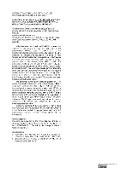Interactome analysis of the mouse polyomavirus large T antigen

Author
Štaflová, Karolína
Pichová, Iva
Publication date
2024Published in
Czech Chemical Society Symposium SeriesVolume / Issue
22 (6)ISBN / ISSN
ISSN: 2336-7202ISBN / ISSN
eISSN: 2336-7210Metadata
Show full item recordCollections
Abstract
Polyomaviruses are small nonenveloped viruses that replicate in the nucleus of the host cell. The mouse polyomavirus (MPyV) large T antigen (LT) is the multifunctional protein expressed in the early phase of the viral infection. LT initiates viral replication, acts as an ATPase, helicase and transactivates late viral expression.Polyomavirus LTs have been shown to interact with a number of cellular proteins such as the oncosuppressor pRB or p53.The interaction of cellular proteins with LT and other early viral antigens leads to reprogramming of the cell, its immortalization and transformation. The LT antigen causes genomic instability of the cell, activates DNA repair mechanisms and prolongs the cellular S S-phase. This allows the virus to use host replication proteins for its own use. Due to the multifunctional nature of the LT antigen, it is likely that not all LT interaction partners of mouse polyomavirus are known.
Keywords
polyomavirus, LT, MKK3
Permanent link
https://hdl.handle.net/20.500.14178/2655License
Full text of this result is licensed under: Creative Commons Uveďte původ 4.0 International




